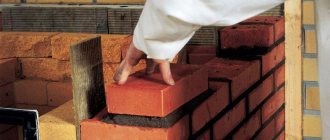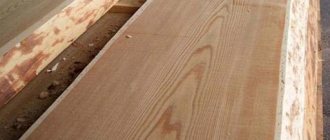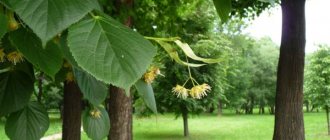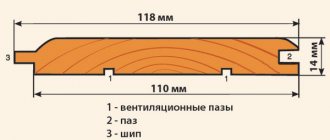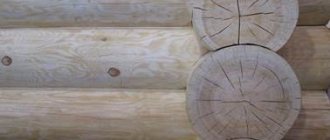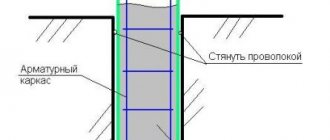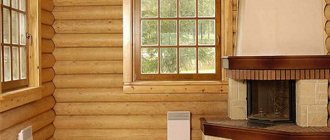Main features of the lining
The lining got its name due to the fact that it was first used exclusively for lining the inside of carriages. Its main distinguishing feature from conventional edged boards is the grooves. They are on the long sides of the panels. Thanks to the presence of grooves, the linings are tightly connected to each other. This allows you to beautifully sheathe surfaces. There will be no gaps or cracks on them.
Manufacturers produce several types of lining. Material options differ in the wood used, quality and size.
On a note! Manufacturers produce not only wooden, but also plastic lining. This material can also be used in a bathhouse, but for finishing only the locker room and dressing room. Plastic lining is not used for steam rooms because it is not resistant to high temperatures. At the same time, lumber is able to absorb and evaporate moisture. Thanks to this feature, it regulates the humidity in the room. In addition, properly selected wood has a positive effect on the human respiratory system, as it releases aromatic substances.
Wooden lining Source kalinales.kz
Which lining is better for a sauna
The most popular material for finishing saunas is wooden lining. It makes the sauna room attractive, warm and cozy. This material has all the necessary properties that are important in an environment of high humidity and high temperature.
Attention! For cladding the interior of a sauna, only lining made of natural wood is suitable. It is strictly not recommended to use plastic panels or a vinyl house block that imitates timber as finishing.
Sauna lovers prefer natural, environmentally friendly materials. To cover a sauna, you can use lining made from completely different types of wood - it depends only on the individual preferences of the owner and his financial capabilities.
Choosing a lining for cladding the inside of a bathhouse
Regular and European standard linings are available. The first version of the material has a fleecy and rough surface. Eurolining is smooth wooden panels. On their back side there are recesses for ventilation. Thanks to the presence of such channels, moisture does not accumulate. The grooves also reduce stress in the lumber.
The permissible moisture level for wood products according to GOST 8242-88 is 12%. At the same time, conventional lining is often made from wood with a moisture content of 25%. For this reason, such panels often become deformed after installation during operation of the bath. Experts know this and therefore use wooden eurolining for finishing the steam room and other premises.
Wooden eurolining Source azbykalesa.ru
Wood for lining
When choosing lumber for the interior decoration of a bathhouse, the wood used during its manufacture is taken into account. Today you can line the inside of a bathhouse with clapboard, which is made from coniferous and hardwood. The material is selected depending on the properties of the wood and the purpose of the specific room in the building.
Linden lining
Linden has light wood with a brown and sometimes red tint. The material made from it has a matte shine and practically does not heat up. Low heat capacity eliminates the occurrence of burns if a person comes into contact with the surface of linden lamellas.
The material is characterized by low thermal conductivity, which allows it to distribute heat throughout the room. Thanks to this property, the walls cool down more slowly. Therefore, linden lumber is often used for cladding steam rooms. In addition, it is able to release aromatic components that have a positive effect on health. They calm and relax a person. The breed is also highly durable and practically does not dry out. The structure of linden consists of homogeneous fibers.
Linden lining Source cstor.nn2.ru
Lining made of Siberian or Canadian cedar
The lamellas of lumber from such species have a pinkish-brown color. Siberian or Canadian cedar is an expensive wood used in the finishing of luxury buildings. It has a positive effect on health, as it releases essential oils during the operation of the building. They improve the functioning of the respiratory system.
The wood of Siberian and Canadian cedar is not subject to rotting, allows for beautiful finishing, and is able to withstand mechanical loads perfectly. No cracks appear on it during the operation of the bath structure.
Canadian cedar lining Source allegroimg.com
Aspen lining
Another popular material for finishing bathrooms. It is distinguished by its white color. On the surface of the lumber you can even notice a silvery tint and barely visible yellowish growth rings. Aspen lining for bathhouses is popular because it is resistant to a humid environment, can withstand high temperatures and does not heat up, which eliminates the possibility of burns on the body.
The strength of lamellas made from this wood increases over time. This characteristic increases to the point where it becomes difficult to drive nails into the material. At the same time, it is easy to work with aspen slats because they initially have a soft structure. In addition, surfaces made from such lining do not require special care. If they darken during the use of the premises, it is enough to sand them a little to restore their former attractive appearance.
Aspen lining Source roomester.ru
See also: Catalog of companies that specialize in finishing materials and related work
Alder paneling
This lumber also cannot boast of a low price. It has a smooth surface. This allows you not to use a grinding machine for additional processing of the finished cladding. Alder slats contain tannins. The wood itself has a hygroscopic structure and is characterized by low thermal conductivity.
Oak lining
Finishing oak lumber is heavy, durable slats with a beautiful texture. They are difficult to process and have a high price. At the same time, oak lining does not rot and does not lose its properties during the operation of bathhouses. In addition, it does not require additional processing, which reduces finishing time.
Pine lining
Pine slats can be beige in color. Red-brown lumber is also available. As the premises are used, the pine panels begin to darken. The material is also distinguished by a clear pattern of growth rings. Resin channels are still visible on its surface.
Pine lining Source pilomaterial-stroi.ru
Pine lining has good viscosity. It is easy to process and has decent mechanical properties. However, after heating, resin appears on its surface. For this reason, pine slats are not used in the steam room, where human contact with the finished surfaces is possible. They are also not used for cladding the ceiling of a steam room, because after cladding it is necessary to repeatedly heat the room, and each time to remove the resin that appears. Such processes must be repeated until its appearance on the finished surfaces stops.
On a note! In the bathhouse, panels made of pine and other coniferous species are used in the dressing room and the washroom. They are cheaper than lining made from aspen for baths and other hardwoods. At the same time, pine panels are resistant to a humid environment, which is often increased by applying a water-repellent agent, for example, protective wax. Coniferous lumber is distinguished by a variety of shades, simple processing, and attractive texture. It gives off a pleasant aroma, which is why it is often chosen for decoration.
Pine lining in the washing compartment Source vsaunu777.ru
Cladding classes
Manufacturers produce lining of different classes, which include materials with a certain density and having a specific quality of the outer surface. If there are a lot of knots in the panels, they will quickly heat up and burn a person on contact. Manufacturers produce lining of the following classes:
- Extra – there are no knots or cracks in the material. Professional lining of the steam room with “Extra” clapboard allows you to get a flat and smooth surface.
- A – the lamellas have a smooth surface. In this case, slight roughness is allowed. The panel may have one knot per 1 running meter, but its diameter should not exceed 15 mm. Hairline cracks are also acceptable. Their length should not exceed half the lining. The panels may also have non-through cracks, the length of which is not more than 95 mm. The presence of crack-like defects that appeared during drying is also allowed. Their length should not exceed the width of the lamella. In addition, there may be resin pockets. Their permissible maximum quantity is 2 pieces per linear meter.
Class A lining panels Source garant-karelia.ru
How to treat the lining inside a bathhouse - a paradoxical answer “by contradiction”
How often do we take a situation to the extreme and pose questions, the answers to which sound equally simple and categorical: “No way!” This is the answer to the question in the title of the article: “Nothing!” And, most likely, it will turn out to be the most correct one.
In any case, if the lining has already been exposed to mold and mildew, then, indeed, the only way to continue dreaming about a bathhouse is to remove everything, remove it, process it and re-lay it all over again.
We invite you to read: How to fix lining in a bathhouse: a close acquaintance with the technology of work
Considering the complexity of the “habitat”, processing the lining inside the bathhouse is the most important task, which has a strange solution
Processing lining for a bath requires scrupulous attention to the joints, and there are enough joints for the whole house
Yes, a bathhouse is a place that requires thinking about it ahead of time and constantly.
Here are actions that can greatly facilitate the answer to this question:
- Under no circumstances should you start working on the rough surface of the wall until it has thoroughly dried.
- If moisture does not leave the wall, it is imperative to find out the reason for its constant appearance and eliminate it.
- It is very useful to treat the rough surface with heat-insulating plaster and antiseptic preparations.
- Use only galvanized metal fasteners - both staples for fastening the sheathing and nails, screws, clamps; rust and wood are the surest path to the destruction of the “weaker”.
- If you intend to use insulation between the sheathing, then carefully choose one that is resistant to high temperatures, its impact and high humidity. Therefore, we can say with confidence that natural fiberglass bath insulation, which is popular in other situations, will not be suitable here. Opt for the latest polymer - foam glass or any other that will meet the strict requirements of operating conditions.
- Be sure to use waterproofing, no matter what type of wood you use as lining for lining the inside of the bathhouse.
- Try to ensure that the waterproofing sheet completely covers the entire working area; if this is not possible, securely connect the joints of adjacent sheets with a double layer of waterproofing tape, above and below the joint.
Smart vertical arrangement of the lining and you may have to process it not twice a year, but only once
- If possible, choose wood species that are resistant to mold, mildew and insects as lining. These are, first of all, oak, alder, and larch.
- In any case, the lining wood must be well dried and already treated with antiseptic materials.
- When installing the lining, choose its vertical orientation. Then the moisture will be less trapped in the grooves between the strips, it will simply flow down.
- Of course, the lower the quality class of wood, the cheaper it is. But still strive for quality not lower than “A”, when no more than one knot per one and a half meters of length is allowed. Knots and cracks are a sure way to stagnation of moisture and accelerated decomposition of wood.
- It doesn’t matter fundamentally which profile of the lining you choose; everything here is determined by experience and dexterity. The only main thing is that the profile ensures reliable fastening of the lining strips without any gaps. There should be no gaps, even the slightest, under any circumstances. In this situation, it is better not to be lazy, not to regret the additional costs and replace the entire strip, or even two adjacent ones that are connected, with new ones.
- When covering a bathhouse with clapboard, still choose simpler methods of fastening. that suit your dexterity - sometimes it is better to refuse to use nails at an angle rather than increase the likelihood of inconsistencies and breakages.
Helpful advice! The general line of conduct when installing lining in a bathhouse can be expressed by the phrase: “Check each of your actions for appropriateness from the point of view of protection from excess moisture, and therefore the appearance of fungus and mold.”
In this regard, even remember that completing all washing procedures and resting in the dressing room still forces you to return to the place of the “list” and thoroughly clean and dry everything.
The cost of processing will be significantly lower if you choose higher quality wood - the photo in this context cannot serve as an example
But since the answer has been given, let’s try to recommend some remedies, perhaps some of them will be your salvation.
Among these assistants are:
- Eurotex-Sauna is a protective acrylic composition with antiseptic and wax, especially for baths and saunas. This product is very careful about the original color of the wood; it contains no organic matter, so it is comfortable to work with in enclosed spaces.
- Sauna, Supi Saunasoja – impregnation of lining for baths. A special feature of impregnations is the creation of a washable film on the surface, so that the walls of your baths will always be clean, even if done with your own hands.
- Wax protective compounds are a whole class of wax-based protective agents.
By and large, this was also done “with my own hands,” so now I’ll have to persistently fix everything
Useful advice! We can say with certainty what you cannot do during processing - use ordinary varnishes and paints.
Such traditional means of protection for bathhouses are not suitable in any form; they are a direct path to demolishing the entire structure and building the bathhouse anew.
conclusions
Treat your bathhouse like you would your dearest friend, and she will reciprocate your feelings. Don’t forget about its capricious nature, and then you will enjoy your steam room for many years and in any season. Otherwise, processing the lining will not be able to help in any way - you will have to console yourself with the fair thought that you still have to pay for mistakes.
The instructions say that it is better, of course, to treat the lining before laying it, but this will have to be done more than once during the course of life.
this article will not leave you indifferent to the results of our carelessness, if you completely forget about the question of how to treat the lining in the bathhouse. At the same time, we will offer some good tips for getting out of this situation.
Interior decoration of the bathhouse with clapboard
Professional lining of the bathhouse from the inside with clapboard is performed with vertical and horizontal fastening of the lamellas. Therefore, the owner of the building chooses the most suitable option even when concluding an agreement with specialists.
Features of vertical and horizontal fastening of lining
Vertical placement of panels allows for faster finishing, since the material is easier and more convenient to fix. In addition, this fastening of the lamellas to a greater extent protects the tongue-and-groove system from the penetration of a damp environment.
When fixing horizontally, wooden panels are laid with the tenons facing up. This allows you to reduce water ingress into the joints. Slats fixed in this way can be easily dismantled near the floor, where they are most exposed to a damp environment. Horizontal boards are easier to replace than vertical boards. In the latter case, you will have to cut off part of the trim. Therefore, horizontal lining of the bathhouse with clapboard inside is the best option for classical buildings built in accordance with Russian traditions.
About finishing
Vertical finishing method
Even a non-professional builder can line a steam room with lining for a bath, if only he had the skills to work with tools. But before you start finishing, you should choose the method in which it will be installed. There are two options available.
- Vertical: The boards are oriented from floor to ceiling. It is considered easier to implement, provides high installation speed, and protects elements from excessive exposure to moisture - condensation flows down the lamellas. On the other hand, it rises with the same ease through the microscopic capillaries that permeate the wood. Vertical installation makes it possible to more effectively accumulate heat in the steam room itself.
Horizontal finishing method
- Horizontal: the slats are mounted parallel to the floor. Moisture getting into the finish is also unlikely, since the boards are attached with the groove down. A plus is the presence of sheathing, which provides a gap between the wall and the lining, which means it allows air to circulate in the space. A special advantage of this installation is the ease of replacing the lower fragments, which, due to high humidity, fail before those located above.
With your own hands
Experts recommend the first installation method for finishing saunas where the steam is dry, and the second for lining classic Russian baths.
Video description
Video material will help you choose the mounting option for the lining
Installation of sheathing
The installation of the lathing allows not only to secure the lining, but also to insulate the bathhouse. This primed block structure is also designed to allow air circulation under the finish. Thanks to the movement of air masses, the inside of the finishing material will dry quickly. The free space will still allow condensation to drain freely. Therefore, the likelihood of mold, rot, and fungus will decrease.
Important! Galvanized profiles cannot be used under finishing lamellas.
In addition, the sheathing under the lining in a bathhouse in a steam room or in another room allows for electrical wiring. It is necessary both for lighting and for installing sockets.
Installation of steam room sheathing Source sibdok.ru
Internal insulation under the lining
At the beginning of work, waterproofing is fixed to the walls. It is nailed or pressed against the sheathing bars. Mineral wool slabs are mainly used as a heat insulator. The insulating material is installed in the empty sections of the sheathing.
Advice! It is recommended to cut the cotton wool into pieces with 10 mm overlaps on each side. In this case, the heat insulator can be placed tightly into the sheathing.
Next, the thermal insulation material together with the frame is covered with a vapor barrier. At this stage, foil material is used as it is able to reflect heat. The vapor barrier is laid with an overlap. Specialists must glue the joints with aluminum tape.
Narrow slats with a maximum thickness of 20 mm are fixed on top of the vapor barrier. Thanks to their use, a ventilation gap is created between the foil and the finishing lumber.
Beginning of work
It is difficult to imagine a bathhouse without heating, but it is better to do it with the help of professionals, including the dressing room. You can tackle wall cladding yourself; the video in this article will help you follow the master step by step. The thermal insulation of the dressing room must be approached very conscientiously. Strict requirements are imposed on the insulation:
- The material must be moisture resistant, inorganic, fireproof and environmentally friendly.
- As a rule, foiled polyethylene is used for insulation; liquid glass is used much less often. Foil polyethylene levels out temperature changes when moving from the street to the dressing room and from the dressing room to the steam room.
- How to line a bathhouse with clapboard to get additional thermal insulation? Exterior decoration plays a role here. It can be made not only from lining, but also from other materials.
- Polystyrene foam, polyurethane foam, mineral wool, glass wool, and extruded polystyrene foam are used as insulation.
- In recent years, the material has gained momentum and popularity, aptly nicknamed by the people “special insulation for the dressing room,” which can be conveniently installed independently and is available in convenient packaging.
- The insulation has the property of maintaining temperature, which provides a comfortable atmosphere inside the room, and the walls of the dressing room can be insulated with it very easily.
- A finished dressing room cannot do without free air circulation; this is an indispensable condition that prevents the accumulation of condensation.
- The absence of condensation will prevent the processes of rotting of wooden log products, and the correct installation of heating will contribute to its safety and long-term operation.
- How to line a bathhouse with clapboard video will allow you to follow the whole process with your own eyes, because the dressing room should be beautiful and warm.
| List of tools and materials | Their purpose |
| Lining for cladding | The type of lining and the wood from which it is made are determined by the financial capabilities of the bathhouse owners and their preferences |
| Wooden blocks 4-5 cm thick | The same dimensions in length if the lining will be mounted vertically or in height |
| Foiled polystyrene foam, the reflective surface layer of which is directed into the room | Insulation, attached to the wall beams with a construction stapler |
| Hammer, jigsaw | Drilling holes, cutting material |
| Level, hammer, screwdriver | Checking the quality of finish, easy tightening of fasteners |
| Galvanized self-cutting | Fasteners that do not rust in high humidity conditions |
- How to line a bathhouse with clapboard to get the best possible result worries many.
- Professionals answer this question and give recommendations.
- When finishing the dressing room, do not leave a single gap.
- The calculation of the size of the room area is carried out according to the principle of 1.3 m² per person, which avoids crowding and unnecessary stuffiness.
- The dressing room should provide containers for shoes and necessary small items, without which bath procedures are indispensable.
- Place comfortable seats, and hang herbs that are good for health, harvested or grown on your own plot, on the walls.
- Coal and firewood should not be dumped in bulk in front of the stove; boxes are suitable for them, which are easily made using carpentry tools.
- Elementary logic and your own desires will tell you whether you can limit yourself to these tips or go even further in arranging the dressing room.
Are windows needed in the dressing room?
The optimal option for windows in the dressing room
Many owners will definitely answer that they are not needed, believing that they worsen the thermal characteristics of the room. Experts and instructions recommend not to give up natural light:
- It is important to install reliable double-glazed windows with good insulation on the outside, inside and insulated window slopes.
- The window sill is installed from the floor at a distance of one and a half meters.
- There is no need to have plastic windows in the dressing room.
- Manufacturers produce high-quality double-glazed windows in wooden frames.
Attention: To obtain the desired result, a double-glazed window is selected; the window is made non-opening to avoid drafts.
- How to cover a bathhouse with clapboard video allows you to understand that you can’t do without ventilation and exhaust in the dressing room, and in the entire bathhouse room as a whole, even if it’s a pity to violate the integrity of the finish.
- A properly executed ventilation system allows you not only to enjoy bathing procedures, but also to preserve the wood for many years, which is facilitated by drying, airing and creating a thermal regime.
- Ventilation regulates air exchange, providing both the influx of fresh air and the outflow of moist, exhaust air.
- Here we need to return again to the question of the need for a window in the dressing room.
- Windows and doors have always been sources of natural ventilation, and the supply of fresh air and the removal of humid air is carried out through special vents cut into the mass itself and closed with sliding plugs.
Vent plug
- They are made in small sizes 15 x 20 cm, the bottom one serves for air flow and is located no higher than 50 cm from the floor and closer to the firebox.
- To release exhaust, moist air, an vent is made on the opposite wall to the steam room, 2 meters from the floor.
Attention: Forced ventilation is provided by installing a fan in the exhaust hole, which accelerates the removal of moist air.
- It follows from this that a small window can be made in the bathhouse, and a full-fledged window opening can be provided in the dressing room?
Video description
The detailed process of installing lining in a bathhouse is shown in the following video
When placing lumber vertically, the finishing process begins from the corner. Each of the lamellas that are laid across or along is fixed on a counter-lattice. This leaves a gap near the floor. Its size ranges from 10 to 30 mm. It is necessary to prevent water from rising through the lumber and protect it from rotting. Moreover, this process occurs if the finishing with paired lining was done both vertically and horizontally. In the first case, the water can rise to a height of up to 0.5 m, and in the second - up to 0.25 m.
Finishing the ceiling with clapboard in the steam room
The finishing process in the steam room begins on the ceiling. This rule also applies to other premises. This is due to the fact that the lining on the walls must rest against the ceiling structure.
The lamellas begin to be mounted on the ceiling from the door. Craftsmen fix the material as securely as possible, because after assembling the entire structure it will have a lot of weight. At the same time, they leave a gap of 50 mm at each end of the lining. It allows the panels to “play” without damaging the entire structure. After all, its geometric dimensions will constantly change due to exposure to high temperatures.
Lining on the bathhouse ceiling Source banyabest.ru
Wiring under the paneling
There is a contradiction between the standard that requires wiring inside a metal pipe with localizing ability (this is when a short circuit does not burn through the pipe wall), when the wiring is done among flammable materials (and lining is also a flammable material) and the standard that prohibits wiring in metal pipes inside steam rooms and showers.
The following is stated in SP 31-110-2003 about wiring in wooden buildings:
About wiring in the cavities of suspended ceilings and partitions with G4 flammability (G4 wood):
The thickness of pipes with localization ability is specified in this table:
The PUE regarding wet rooms says the following:
How to resolve this contradiction? It’s quite simple: in the steam room and washing room you shouldn’t do any wiring at all. Your task is to lead the wire through the wall directly to the light source. Because in the steam room and washing room only the presence of light sources is permissible.
IMPORTANT! All sockets and switches are made outside the steam room and washing room!
In other rooms, it is worth listening to the standards that talk about wiring in wooden, and therefore in wood-trimmed buildings .
Metal pipes with localization capabilities do not excite builders. At a minimum, they are trying to replace steel pipes with copper ones, because copper is softer, it does not always need a pipe bender, but a steel one does, or they make a composite structure with angles.
At the most, they think that a metal hose suitable. Or corrugation. Because you have an RCD or a difavtomat. But no. The automatic device is triggered by short circuits, but the RCD is simply not intended for this; it only reacts to leakage currents. But if there is an RCD, then there should also be an automatic machine. And what does it matter if an automatic or automatic device will turn off the current in the event of a short circuit? After all, it has already happened, and thermal energy has been released. This is why a localizing pipe is needed so that the tree does not ignite from the release of this energy.
BY THE WAY! According to the PUE, the filling of the pipe with wire should not be more than 40%, this is to select a suitable pipe cross-section for the wire cross-section you need.
In general, we believe that regulations are drawn up, in part, to prevent typical problems, so they should be followed. Even if it's expensive or time-consuming.
Therefore, we recommend doing the wiring in the bathhouse under the clapboard in steel pipes, or, if the wall allows, then with plaster protection. In the latter case, a pipe is not required. But in the vast majority of cases, the lining is placed on the sheathing on top of the film or foil that covers the insulation, so the option of plaster is eliminated.
In the steam room and washing room , we recommend wiring from the other side of the wall or ceiling, bringing only the short ends of the wires leading to the lighting fixtures inside. Otherwise, you are left with only plastic, and it is not completely non-flammable or localized. The steam room, in turn, is extremely rarely not made of wood. So there are practically no options other than what is described. Well, or with violations.
Also, for those who are interested in an in-depth acquaintance with the standards, we advise you to read our article, in which we simply squeezed out everything that is said in the PUE about baths, saunas and washrooms.
practical recommendations on bathhouse electrics in this article.
Well, another video on the theory to follow up:
***


